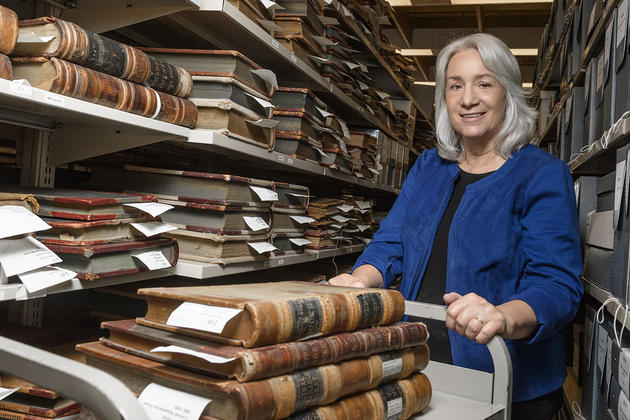
Excerpt from The Guardian
At a Nov. 16 meeting, the Finance, Audit and Infrastructure committee of the Wright State Board of Trustees passed a resolution signaling support for the relocation of the university’s archives.
The vote is subject to approval from the Board of Trustees as a whole, but it signals progress on a proposal which has been discussed for over one year. If the vote passes, the archives will be moved from the fourth floor of the library to the former Wright-Patt Credit Union headquarters, located across the street from campus at 2455 Presidential Drive.
The Wright State special collections and archives includes a renowned Wright Brothers Collection, first-edition works by poet Paul Laurence Dunbar, archives from the Dayton Daily News and other historical artifacts.
The archives were established in 1967 with the donation of a manuscript collection from James M. Cox, Dayton Daily News founder and former Ohio governor. Its first location on campus was said to have been in a closet in Allyn Hall, according to Dawn Dewey, head of special collections and archives at Wright State.
“The archives started out really small. We did not have a lot of collections,” Dewey said. “I have seen the archive grow from a tiny space into a really substantial collection with a lot of outreach programs and collections that are heavily used. We really have made a name for ourselves internationally.”
In the 1970s, Wright State became one of the founding members of the Ohio Network of American History Research Centers, according to Dewey. From that point on, the university began to collect more local and regional artifacts, including the Wright Brothers Collection, Dewey said.
As Wright State continued to establish its archives worldwide, it began to collect so much that its current archive space became inadequate, according to Dewey. The archives are currently stored in two separate facilities – 8,000 square feet are in the library and another 4,000 are in the basement of the Medical Science building.
“We don’t have enough space to continue to collect the history of the Miami Valley and the history of Wright State,” Dewey said. “We need more space for the collections.”
The university’s archives have been in the fourth floor of the library since 1989. Before then, they had also been stored in Millet Hall and in lower floors of the library. Dewey said that while the fourth floor allowed for more space than previous locations, it has come with other issues – mainly, climate control.
The library’s fourth floor is open to a balcony toward the center of the floor. Therefore, the room temperature of the archives locations is the same temperature as the rest of the building, Dewey said.
“In order to care for the materials we have, you have to have specific temperature and humidity levels maintained,” Dewey said. “We don’t have the capability of doing that in this location.”
The library also lacks a fire suppression system and has had some issues with insects. Similar problems have come up in the basement of Medical Sciences, along with water leaks and humidity.
Dewey said that she has been working to relocate the archives for up to 20 years. “There has never been a good location for us to move to here on the main campus,” Dewey said. “Controlling our environment is something we have got to get a handle on immediately.”
The proposed new location for the archives, on the other hand, offers fire suppression infrastructure, better HVAC system which includes a humidifier, a loading dock and freight elevator and 30,000 square feet, Dewey said.
It is not clear what will happen to the fourth floor of the library if the archives are relocated. Dewey said that the 1903 Wright Flyer replica will stay on display in the atrium of the library.
“Our thinking was that moving the archives using an existing building that could be adapted for what we need would be the smartest and best use of resources right now,” Dewey said. “It will give us the opportunity to grow and to continue to bring in historical materials that will benefit the students on this campus as well as the community and the researchers worldwide.”

